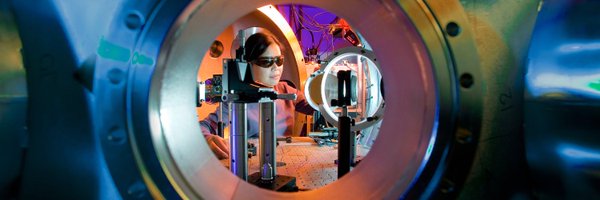 (AGENPARL) - Roma, 14 Ottobre 2022
(AGENPARL) - Roma, 14 Ottobre 2022(AGENPARL) – ven 14 ottobre 2022 A weekly compendium of media reports on science and technology achievements at Lawrence Livermore National Laboratory. Though the Laboratory reviews items for overall accuracy, the reporting organizations are responsible for the content in the links below.
LLNL Report, Oct. 14, 2022
Climate change is affecting the cooling and energy use of supercomputers like El Capitan at LLNL.
[A climate of change for supercomputers](https://www..science.org/content/article/climate-change-threatens-supercomputers)
Managers at high-performance computing (HPC) facilities are waking up to the costly effects of climate change and the wildfires and storms it is intensifying. With their heavy demands for cooling and massive appetite for energy, HPC centers — which include both supercomputers and data centers — are vulnerable, says Natalie Bates, chair of an HPC energy efficiency working group set up by Lawrence Livermore National Laboratory (LLNL). “Weather extremes are making the design and location of supercomputers far more difficult.”
Climate change can bring not only heat, but also increased humidity, reducing the efficiency of the evaporative coolers many HPC centers rely on. The cost of such adaptations is motivating some HPC centers to migrate to cooler and drier climates, places like Canada and Finland.
But some HPC facilities find themselves stuck. The supercomputers at LLNL are used to simulate the explosions of nuclear weapons. The cost of relocating specialized personnel could be prohibitive, and LLNL’s California site is a highly secure facility, says Chief Engineer Anna-Maria Bailey. Instead, LLNL is studying the possibility of moving its computers underground. “Humidity and temperature control would be a lot easier,” she says, “like a wine cave.”
[Read More](https://www.science.org/content/article/climate-change-threatens-supercomputers)
The NASA DART spacecraft approaches the asteroid Dimorphos. Image courtesy of NASA.
[A one-two punch](https://www.nationalgeographic.com/science/article/nasas-asteroid-smashing-spacecraft-produced-a-few-surprises)
To test a strategy that could knock a potentially hazardous asteroid off of a collision course with Earth, NASA slammed a spacecraft into a 500-foot-wide asteroid called Dimorphos, which orbits a much larger asteroid called Didymos — and the test was literally a smashing success.
Instead of merely nudging Dimorphos onto a slightly tighter orbital path, as expected, the Double Asteroid Redirection Test (DART) delivered a cosmic face-punch that shaved 32 minutes from the moonlet’s orbit. It also turned Dimorphos into something resembling a comet: The moonlet now has a dusty debris tail some 6,000 miles long.
Megan Bruck Syal of Lawrence Livermore National Laboratory calls those images “incredible” and says that they’re helping researchers learn about how planetary impacts unfold in reality — which will inform the simulations she and her team work on.
But there’s a drawback to the DART strategy: All the dust that now swaddles the asteroid system could be dangerous to additional spacecraft. This could present a problem if one impact isn’t enough.
“In a real emergency, we might need to impart a much larger change in velocity, and the asteroid might be more massive,” Syal said. “If we needed more than one kinetic impact to successfully move an asteroid off of an Earth-impacting trajectory, a dust-filled environment may be more challenging for navigating a second impactor at the target asteroid.”
[Read More](https://www.nationalgeographic.com/science/article/nasas-asteroid-smashing-spacecraft-produced-a-few-surprises)
LLNL’s Kirsten Howley is a planetary defender.
[Life isn’t always like the movies](https://arynews.tv/hollywood-earth-asteroids-armageddon/)
Not that an asteroid couldn’t slam into Earth, mind you. Asteroids — mostly tiny ones — pass by our planet virtually every second. But the people charged with stopping the big ones aren’t reaching for their spacesuits with mere hours to spare. They also aren’t all men.
“I would say the number one question I get when I tell people what I work on, is ‘Oh, like ‘Armageddon?’ And it’s nothing like ‘Armageddon,’” says Lawrence Livermore National Lab physicist Kirsten Howley, whose day job includes defending our planet from asteroids.
Howley doesn’t have an orange jumpsuit at hand, but her job is serious business. She and her team of planetary defenders specialize in how we might deflect an asteroid that poses a threat to Earth. Like Bennu.
Bennu, weighing more than 78 billion kilograms, is an ancient asteroid currently orbiting the sun on a path that brings it close to Earth. It has a 1-in-2,700 chance of colliding, albeit not until 2185.
If this were a movie, Howley and her team would be on the poster, among the people tasked with saving the Earth. But Oakland native Howley, who chased her childhood passion for the stars from community college to UC Berkeley to UC Santa Cruz, where she became the first person in her family to earn a Ph.D., is not sitting around waiting to jump onto a rocket at a second’s notice.
Because she doesn’t have to. Her arsenal against Earth-killing asteroids includes physics and math.
[Read More](https://arynews.tv/hollywood-earth-asteroids-armageddon/)
Earth is surrounded by a giant magnetic bubble called the magnetosphere, which is part of a dynamic, interconnected system that responds to solar, planetary and interstellar conditions. Photo courtesy of NASA.
There are few places on Earth where conditions get as extreme as they do at the National Ignition Facility. At its heart, 192 lasers are trained on a gold cylinder roughly the size of an AA battery. As the beams converge, the temperature in the test chamber leaps to 100 million degrees Celsius, hotter than the center of the sun.

